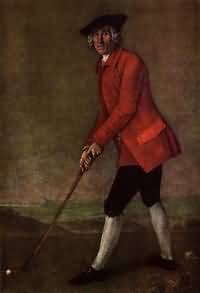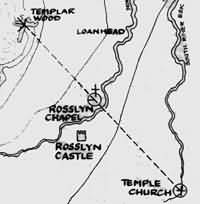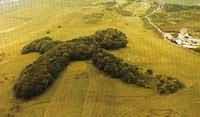  |
  |


ANYONE looking for colourful family history need only take a peek at the Clan Sinclair. It's all in there - family ties to William the Conqueror, A pre-Columbus voyage to the New World and liege lords to Robert the Bruce. To top it all there's their position as Scottish Grand Masters of the Freemasons and legendary guardians of the secrets of Rosslyn.
Sir William St Clair, was created the first Duke of Normandy by the treaty of St Clare-sur-Epte in the year 912. His descendants in northwest France became known as St Clare, or St Clair. This is all recorded in the Norse Sagas.
These sagas provide us with further clues as to the clan's journey from Viking raiders to Scottish lords. It is a long and complicated trip that begins to pick up around the time of William the Conqueror.
A St Clair descendant, Wildernus, married a daughter of Richard, the fifth Duke of Normandy, father of William the Conqueror. One of Wildernus's sons, William St Clair, fought alongside his relative (Willianm the Conquerer) at the Battle of Hastings in 1066. And so the Sinclairs arrived in Britain.
Whilst this earlier French period of St Clair history may not be entirely accepted, we can be more certain about the St Clair lineage once they step foot in Scotland. Here we find the same William St Clair who fought at Hastings acting as cupbearer to King Malcolm Canmore's bride Margaret Atheling (whose family had been contenders for the English throne and exiled after the Norman invasion.)
But if the St Clairs did well out of Norman land grants in England, they went on to do even better by turning their allegiance to the Scottish king.
In the reign of David I (Malcolm Canmore's son) St Clairs held the Barony of Roslin and Pentland and were powerful landowners. A century later, another William St Clair was one of the most powerful men in Scotland, as sheriff of Edinburgh, guardian of the heir to the throne and governor of Edinburgh Castle.
If you peppered Scotland with dots across Lothian and Caithness in medieval times, chances are you'd land within ten miles of a Sinclair property.
The Sinclair properties also seemed to be built in a mysterious way, if you follow a straight line from Rosslyn directly due north you end up at the Castle of Mey, which was built in the 16th Century by the 4th Earl of Caithness, George St Clair. Ravenscraig and Keiss castles (also St Clair built) are on that grid line and so is Balmoral Castle, which has at its core another castle built in the 14th Century by William Drummond (married to a St Clair.) This same line passes Holyrood – named after the sacred relic of the True Cross, or Holy Rood. This was said to have been guarded on its journey from Hungary to Scotland by William St Clair, cupbearer to Margaret Atheling.

Dozens of other St Clair castles and strongholds are alleged to follow a connecting geometric pattern involving the re-usage of ancient megalithic and druidic sites. This is used to demonstrate St Clair connections to the Knights Templar – who could have introduced them to the teaching of sacred geometry.
This gravestone of Sir William St Clair is thought by some to be a Templar grave. The remains of William St Clair, great-grandfather of the founder of Rosslyn Chapel, are said to be buried in Rosslyn, Templar style, with crossed leg bones placed beneath skull. Many believe the Chapel to be a Templar shrine and its position on the worldwide stage as a place of historical intrigue relates in part to this.
The Knights Templar were in reality a Western Christian order originally sanctioned by the Roman church, it's hardly surprising that their symbolism was used in a pre-reformation church by the St Clairs of Rosslyn.
Even without any Templar influence William de St Clair led an interesting life. He was killed alongside Sir James Douglas while taking the heart of Robert the Bruce to the Holy Land. His grandson Henry St Clair (created Earl of Orkney through the family's Norse links) is said by some to have travelled to America 100 years before Columbus. (Look for proof of this in the Chapel).
The building of Rosslyn Chapel by William St Clair, the third Orkney Earl, has to be the family's greatest claim to fame. On his death, the settling of his estates his sons split the Earldoms of Caithness and Roslin. The Caithness Earls began to use the name Sinclair and the spelling came into general use, though the Earls of Roslin still use the older spelling.
Latter-day family members still court controversy. Sir Archibald Sinclair was Secretary of State for Air under Churchill in 1940 and was said to be behind secret peace negotiations prior to the Hess landing in May 1941.
The present Earl of Roslin, as head of the Metropolitan Police royal protection squad, was probably thankful to use his lesser known title of Loughborough when Osama bin Laden in a pink frock (disguised comic Aaron Barschak) managed to gatecrash Prince William's 21st birthday party.
The Sinclairs or St.Clairs have a rich history in Scotland, Were they really Templar Knights? .. There is little proof to this, But close to Roslin Chapel, is the village of Temple ... this village contain a ruined Templar church and Templar Wood. Templar Wood is Best viewed from the air, and is seen to be planter in the form of a Templar cross (The Templar cross is more like a plus sign than the Christian cross we are more used to)

So even if the St. Clairs of Roslin were not Templar Knights, they certainly allowed the Templars to use their land.
| © RIYAN Productions |